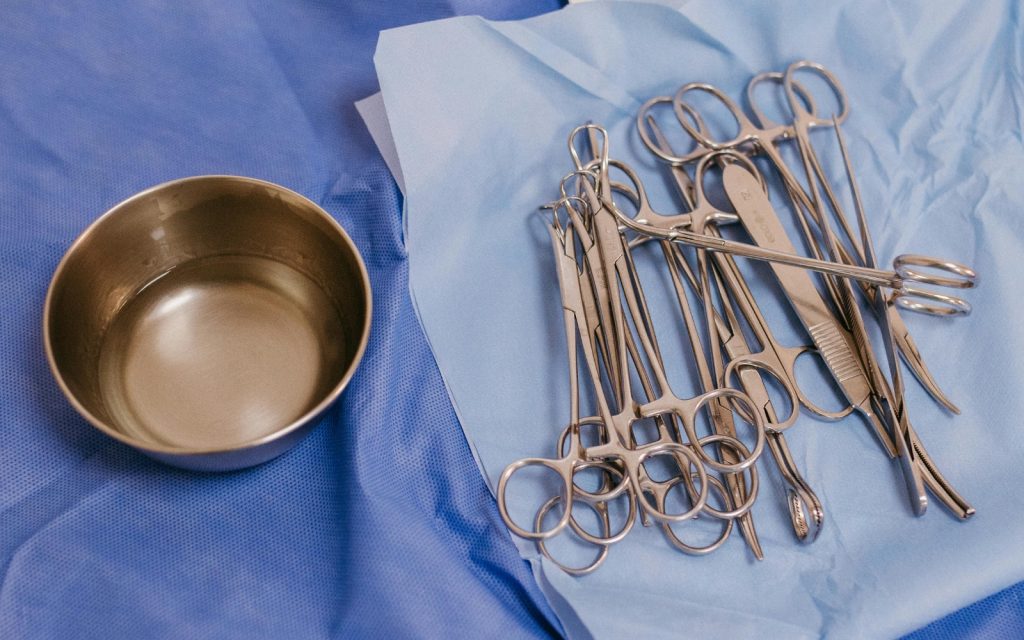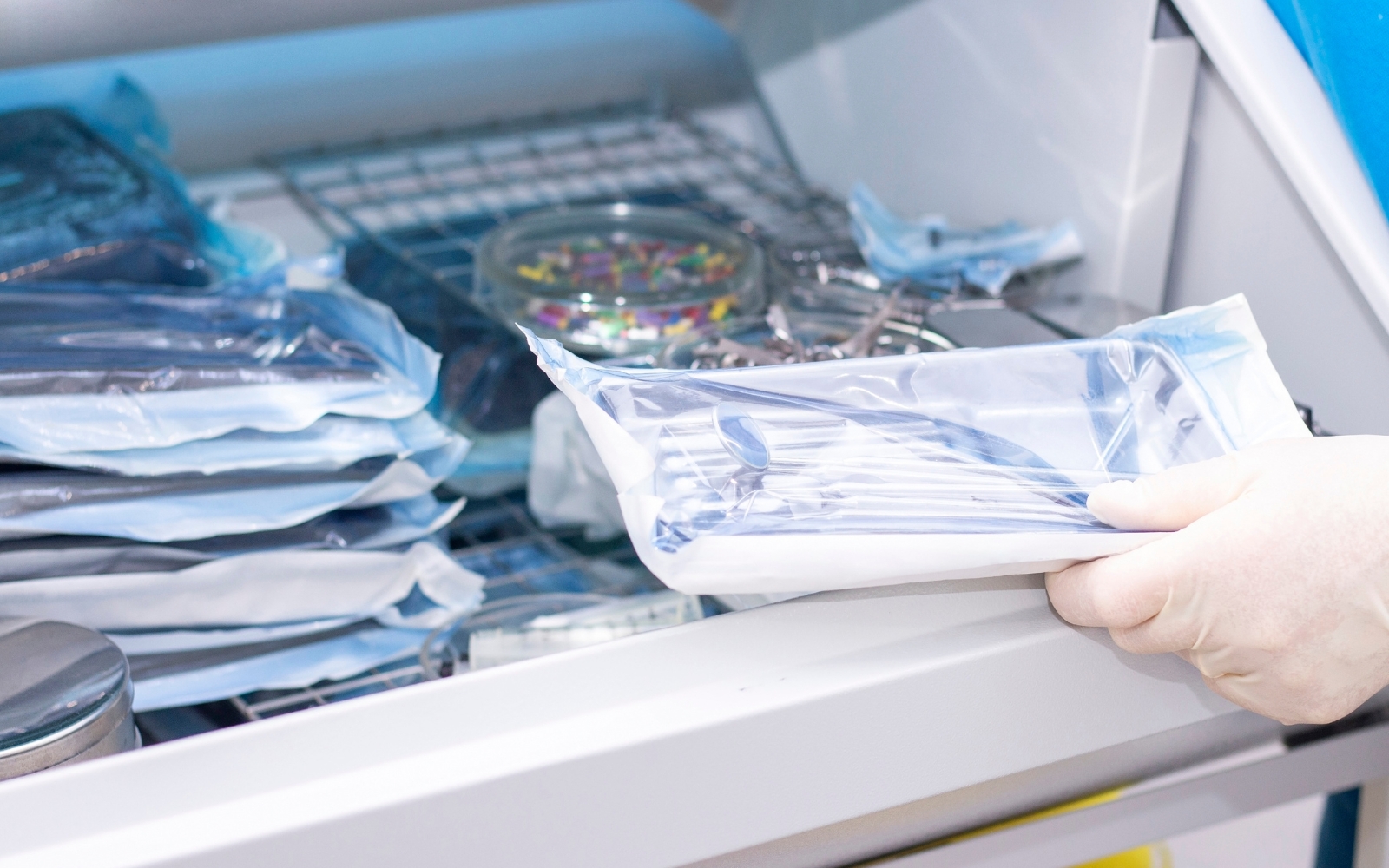- Standard sterilants, disinfectants, and anesthetists are the hazardous gases frequently found in the healthcare sector.
- Some of these gases are still not cleared by the FDA.
- It is necessary to monitor the indoor environment in healthcare facilities to ensure that the levels of dangerous gases remain below recommended levels.
Healthcare facilities face daily chemical risks because of the use of many compounds, including gases. The chemicals and their exposure duration and frequency will vary depending on the department. Healthcare facilities use several control technologies to protect
their professionals, workers, and patients from high exposure to hazardous gases. However, the concentrations of the gases can rise above the recommended levels. In this article, safety managers can learn which gases can be dangerous in healthcare facilities.
Decontamination Chemicals
Cleaning practices are critical to maintaining healthy environments by preventing the spread of infections by disease-causing pathogens through decontamination. While the chemicals used for decontamination can kill pathogens, they can also be toxic to people in varying degrees. Three decontamination methods are used to keep hospitals safe.
Sanitize: Healthcare facilities use chemicals to maintain required sanitation standards while cleaning floors and surfaces. Sanitizing removes dust and lowers germ levels.
Disinfect: Gases are also used for disinfection and kill viruses, bacteria, and fungi, but disinfectants cannot destroy bacterial spores, so pathogen numbers are reduced but not eliminated. Gaseous disinfectants are used for reusable dental and medical devices. Gaseous disinfectants include glutaraldehyde, hydrogen peroxide, peracetic acid, etc.
Sterilize: Sterilization eliminates all microbes and is the standard decontamination method for hospitals. While hot or dry heat of 121–129 °C is the standard procedure and is non-toxic, it is unsuitable for sterilizing devices made of plastic that high temperatures can destroy. Several gases like ethylene oxide, hydrogen peroxide, chlorine dioxide, formaldehyde gas, peracetic acid, and ozone are useful for low-temperature sterilization.
Chemicals used for cleaning disinfection increase nurses’ risk of new asthma onset by 67%. Many chemicals are volatile organic compounds (VOC); they are liquids that form vapors at room temperature. Some hazardous gases used as standard cleaning chemicals that should be monitored are discussed below.

-
Ethylene Oxide
Ethylene oxide (EtO) is a sterilant capable of killing endospores. It is a VOC used to sterilize moisture and heat-sensitive instruments and materials. EtO is more penetrating and is effective at lower temperatures than those needed for steam and formaldehyde sterilization.
The gas is carcinogenic and flammable. Acute and chronic exposure causes several health problems. Since it is carcinogenic, any exposure is considered dangerous. The US
Environmental Protection Agency (EPA) has introduced new stricter regulations to control any exposure to the gas.
-
Formaldehyde
Formaldehyde (HCHO), a VOC, is a gas at room temperature and works as an alkylating agent that inactivates microbes. It works faster than ethylene oxide, and the cost per cycle is low. Low-temperature formaldehyde sterilization is effective against sores of specific bacterial groups like mycobacteria, Candida albicans947-949, Geobacillius stearothermophilus, Bacillius atrophaeus, and vegetative bacteria.
Formaldehyde vapor is used to sterilize heat-sensitive equipment. It also preserves tissue removed in surgeries, autopsies, and endoscopies. Formaldehyde is found in areas where tissue is maintained, including histology. The levels of the gases are not monitored closely during autopsies and histological sample preparation.
Formaldehyde is potentially human carcinogenic, and OSHA regulates its levels strictly.
-
Vaporized Hydrogen Peroxide
Vaporized hydrogen peroxide (VHP) was introduced as a sterilant for medical equipment in the mid-1980s. VHP can deactivate microbes and reduce their numbers by 97%, which is more oxidizing than chlorine and chlorine dioxide. Decontamination needs only a short cycle time of 30-45 minutes, which works at low temperatures of 40-50°C, but its penetrative capacity is less than EtO.
VHP has been FDA-cleared since the beginning of 2024 as a sterilant for medical devices. VHP is used to decontaminate instruments, surfaces, and entire rooms. It is suitable for many materials except cellulose and nylon. Its byproducts, water, and oxygen are environmentally safe. However, hydrogen peroxide stored in containers can break down into byproducts, increasing pressure and raising risks of explosions.
Hydrogen peroxide, a VOC, is very reactive and can have adverse health effects due to acute and chronic exposure depending on the duration and levels of the gas.
-
Chlorine
Chlorine (Cl2) is a disinfectant as it is a potent oxidizing agent that can deactivate bacteria, fungi, viruses, and spores. It is cheap and readily available. It is heavier than air and collects in low-lying areas.
Chlorine is used in surface disinfection, including operating rooms, intensive care, patient wards, and diagnostic areas.
Chlorine is a poisonous gas, and people are at health risk due to inhalation, skin or eye contact, and ingestion. Chlorine reacts with other substances to form explosive compounds. It is also corrosive and needs non-metal conduits.
-
Chlorine dioxide
Another halogen used for decontamination is the chlorine dioxide (ClO2). The gas is a powerful disinfectant that kills viruses, bacteria, fungi, and spores. It doesn’t form harmful byproducts and can be used in low concentrations.
ClO2 is used to decontaminate hospital rooms to control infections caused by environmental bacterial contamination. Leakages from the door must be prevented in areas of use. ClO2 is also used to disinfect metal, plastic, and glass surfaces by exposure to 30 minutes.
Chlorine dioxide is not carcinogenic in humans but has other health effects. The chemical has only recently, in February 2025, been cleared for use as a disinfectant in the form of wipes and foams.
-
Vaporized Peracetic Acid
Peracetic acid is a mixture of hydrogen peroxide and acetic acid and can sterilize at room temperature. Peracetic acid vapor can destroy bacteria, fungi, and yeasts. It also breaks down into harmless byproducts: water, oxygen, and carbon dioxide.
It helps sterilize around 100 materials like thermoplastics, bio-absorbables, adhesives, metals, etc. None of the vaporized peracetic acid systems has been cleared for use by FDA.
-
Glutaraldehyde
Glutaraldehyde is a VOC that is a cold sterilant used frequently for heat-sensitive equipment such as ear, nose, throat, surgical, and dialysis instruments, endoscopes, bronchoscopes, and suction bottles. It is also used in histology and pathology laboratories as a tissue fixative and in X-ray development. People in the operating rooms, sterilization units, histology, and pathology are at risk of exposure to the vapors.
The vapors can cause several health problems, mild to severe, such as respiratory irritation, breathing difficulties, and skin rashes.
-
Ozone
Ozone is a very effective disinfectant when combined with high humidity against respiratory viruses.
It is used for whole room and surface decontamination of coronavirus, including bovine coronavirus and pandemic coronavirus SARS-CoV-2. It is helpful for ceramic tiles, furniture, and steel surfaces. It can help in environmental decontamination, which is often missing in hospitals. Its use is not standard in hospitals.
Ozone levels must be monitored as they cause respiratory and other problems.
Anesthetic Gases
Anesthetic gases are another group that can be toxic. Anesthetic gases are required to
keep the patient unconscious during medical procedures. However, people can be exposed to “waste anesthetic gases,” which leak out of operating rooms. Both men and women can have adverse health impacts from the “waste anesthetic gases.”
Health professionals working in operating and recovery rooms are at greater risk of exposure to these gases in hospitals for humans and animals. At high risk are anesthesiologists, surgeons, dentists, veterinarians, operating-room personnel, and recovery-room personnel.
The risk to health professionals increases when the rooms have no automatic ventilation systems, leaks in the anesthetic breathing circuit, escape during system hookup or disconnection, and from patient masks.
Standard anesthetics are nitrous oxide and halogenated gases such as desflurane, enflurane, halothane, isoflurane, and sevoflurane.
Nitrous oxide
Nitrous oxide (N2O) is the standard gas used for anesthesia. It was first used as an analgesic by dentists in 1812. It has since been used as an anesthetic and analgesic for many surgical procedures.
Nitrous gas is also called laughing gas. Nitrous gas is used in operating rooms but is contraindicated for patients suffering from certain conditions, including respiratory or psychiatric problems, and for children below two years. The benefits are that the gas acts fast, is easy to administer, and its effects last only a short time.
Short-term exposures to nitrous oxide are not harmful, but chronic exposure can cause weakened immune systems, depression, psychosis, memory loss, tinnitus, birth defects, etc.
Follow Regulations
Several regulations in the US require that employers provide a safe and healthy environment for their staff, such as the Occupational Safety and Health Administration (OSHA) Act’s General Duty Clause (Section 5(a)(1)) and Hazard Communication Standard (29 CFR 1910.1200). Besides the eight gases discussed, many solid and liquid chemicals can be hazardous to health professionals, personnel, and patients. To keep the gas levels under recommended levels, fixed gas analyzers can monitor the environment around the clock and year. Interscan provides fixed and portable gas analyzers that can be used to monitor the levels of most of the toxic and hazardous gases found in hospitals.
Find out more about Interscan gas sensors for your healthcare facility’s needs.
Sources
CDC. (2023, Dec 11). Other Sterilization Methods. Retrieved from https://www.cdc.gov/infection-control/hcp/disinfection-sterilization/other-sterilization-methods.html
Charlier, B., Coglianese, A., De Rosa, F., De Caro, F., Piazza, O., Motta, O., Borrelli, A., Capunzo, M., Filippelli, A., & Izzo, V. (2021). Chemical risk in hospital settings: Overview on monitoring strategies and international regulatory aspects. Journal of public health research, 10(1), 1993. https://doi.org/10.4081/jphr.2021.1993
CHEMM. (n.d.). Chlorine – Emergency Department/Hospital Management. Retrieved from https://chemm.hhs.gov/chlorine_hospital_mmg.htm
Cherney, K. (2021, Feb 26). The Difference Between Disinfecting and Sterilizing. Retrieved from https://www.healthline.com/health/disinfect-vs-sterilize
Cleveland Clinic. (n.d.). Nitrous Oxide (Laughing Gas). Retrieved from https://my.clevelandclinic.org/health/treatments/nitrous-oxide-laughing-gas
FDA. (2023, Oct, 10). Sterilization for Medical Devices. Retrieved from https://www.fda.gov/ medical-devices/ general-hospital-devices-and-supplies/sterilization-medical-devices
Franke, G., Knobling, B., Brill, F. H., Becker, B., Klupp, E. M., Campos, C. B., … & Knobloch, J. K. (2021). An automated room disinfection system using ozone is highly active against surrogates for SARS-CoV-2. Journal of Hospital Infection, 112, 108-113.
Healthcare Environmental Resource Center. (n.d.). Sterilant and Disinfectants in Healthcare Facilities. Retrieved from https://www.hercenter.org/hazmat/steril.php
Helou, M., Mahdi, A., Abou Fayad, A. et al. (2023). Antimicrobial effects of chlorine dioxide in a hospital setting. Sci Rep 13, 22866. https://doi.org/10.1038/s41598-023-49997-z
Kumar, R. & Rana, A. ( 2021). Basic Concepts of Sterilization Techniques. Res. J. Pharmacology and Pharmacodynamics. 13(4):155-161. DOI: 10.52711/2321-5836.2021.00029
Lowe, J. J., Gibbs, S. G., Iwen, P. C., Smith, P. W., & Hewlett, A. L. (2013). Impact of chlorine dioxide gas sterilization on nosocomial organism viability in a hospital room. International journal of environmental research and public health, 10(6), 2596–2605. https://doi.org/10.3390/ijerph10062596
NIOSH. (2001). Glutaraldehyde – Occupational Hazards in Hospitals. Retrieved from https://www.cdc.gov/niosh/docs/2001-115/default.html
OSHA. (2006). Best Practices for the Safe Use of Glutaraldehyde in Health Care. Retrieved from https://www.osha.gov/sites/default/files/publications/glutaraldehyde.pdf
Totaro, M., Casini, B., Profeti, S., Tuvo, B., Privitera, G., & Baggiani, A. (2020). Role of Hydrogen Peroxide Vapor (HPV) for the Disinfection of Hospital Surfaces Contaminated by Multiresistant Bacteria. Pathogens (Basel, Switzerland), 9(5), 408. https://doi.org/10.3390/pathogens9050408
WHO. (n.d.). Exposure to hazardous chemicals. Retrieved from https://www.who.int/tools/occupational-hazards-in-health-sector/exposure-to-hazardous-chemicals


